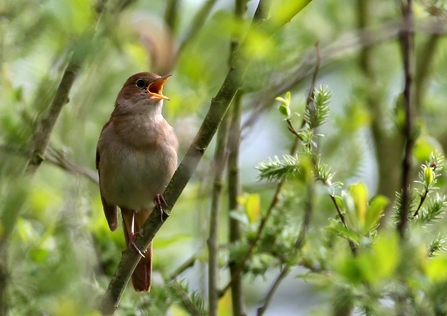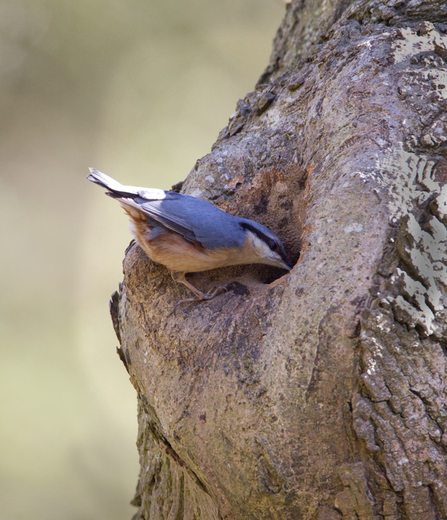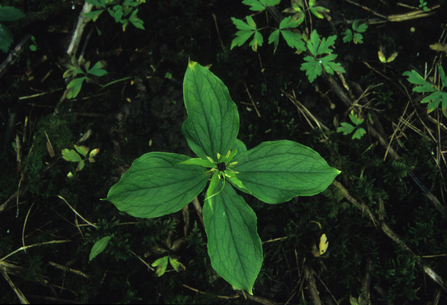Important update to this news post - 15th December 2022
Thank you! Hintlesham woods has been saved from damaging development! Read more here.
By Steve Aylward
Important update to this news post - 15th December 2022
Thank you! Hintlesham woods has been saved from damaging development! Read more here.
National Grid propose to develop a new overhead powerline through Hintlesham Woods Site of Special Scientific Interest, an RSPB managed ancient woodland near Hadleigh in Suffolk. The new powerline would run adjacent to the existing line which currently runs through the woodland. The construction of this line would require the removal of a section of the woodland, causing the direct loss of mature trees and ancient woodland habitat. Suffolk Wildlife Trust, the RSPB and the Woodland Trust are working together to save Hintlesham Woods from this damaging development. Currently National Grid are proposing two route options for the overhead powerline at Hintlesham Woods, Option 1 would go around Hintlesham Woods to the west avoiding loss of ancient woodland, Option 2 would run through the woodland causing the loss of irreplaceable ancient woodland habitat. We want National Grid to remove Option 2 from their proposals to avoid harm to this rare wildlife habitat.

nightingale by Ian Goodall
Ancient Woodlands are woodlands which have existed for at least 400 years and because of the age of these habitats they are home to huge biodiversity, with many plants, fungi and insects which depend on these undisturbed wild places for their survival. Ancient and veteran trees with their many holes, cracks, dead wood and decay provide habitats for many more species such as the rare barbastelle bats which will roost in decaying trees and birds such as the treecreeper which nest in the gaps between trees and their bark. Ancient Woodlands are considered irreplaceable habitats because of the amount of time it has taken them to develop and the rarity and species diversity which is associated with these old woodlands.
Hintlesham Woods is one of the largest remaining fragments of ancient woodland left in Suffolk, which has been in existence since at least the 12th century. Soils which have been left undisturbed for centuries are home to rare ancient woodland plants and fungi. Woodland plants such as herb paris and violet helleborine rarely grow outside of ancient woodland habitats and depend on the conservation of these places for their survival. Hintlesham Woods is home to one of our most iconic woodland butterflies the notoriously elusive purple emperor. One of our largest UK butterflies, the males have iridescent purple wings and are hard to see because of their habit of flying high atop woodlands feeding on tree sap. The rare hazel dormouse also thrives here in the ancient woodlands and hedgerows of this part of Suffolk. See the RSPBs Hintlesham Woods page for more details about this special ancient woodland.
We want National Grid to protect our ancient woodlands, not continue to threaten these rare, biodiverse habitats with development.

Nuthatch by Liz Cutting
What we are doing to protect Hintlesham Woods
We have written a joint letter to National Grid urging them to remove the damaging route through Hintlesham Woods from their proposals and stop the irresponsible destruction of irreplaceable ancient woodlands. We are responding to all consultations, objecting to the route through Hintlesham Woods and having meetings with National Grid to highlight our concerns and discuss alternatives to the route through Hintlesham Woods.
We are also encouraging our members and supporters to help save Hintlesham Woods.
How you can help
We need more local people to stand up for Hintlesham Woods and let National Grid know they should be avoiding the loss of irreplaceable ancient woodland habitats. Tell National Grid that they should be taking Option 2, the route through Hintlesham Woods, off the table and stopping the irresponsible destruction of ancient woodlands in Suffolk.
You can do this by emailing National Grid at contact@bramford-twinstead.nationalgrid.com. The more people that contact National Grid, the more likely we will be able to save one of Suffolk’s wild places for generation to come!

Herb paris by Steve Aylward